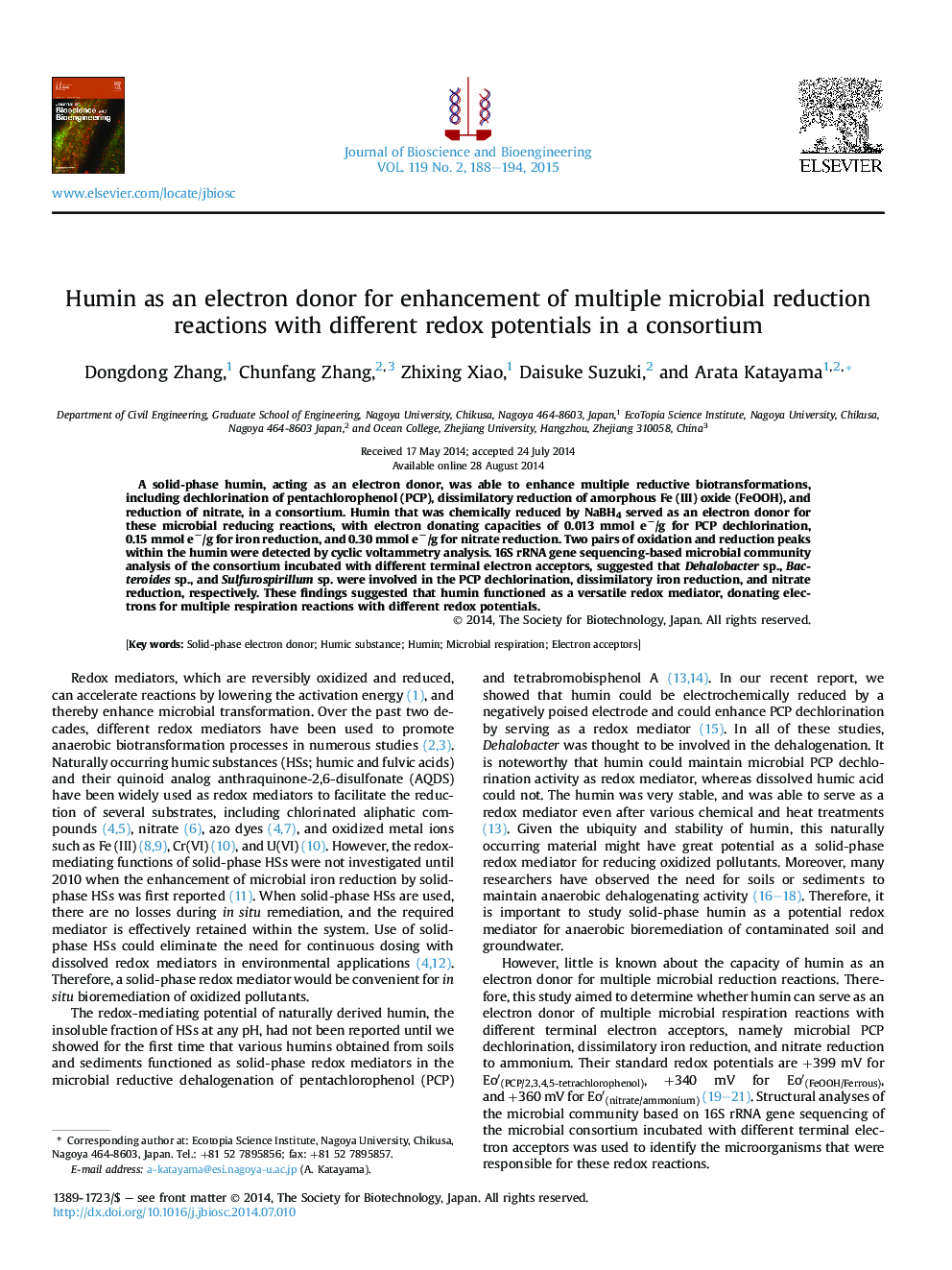| Article ID | Journal | Published Year | Pages | File Type |
|---|---|---|---|---|
| 20370 | Journal of Bioscience and Bioengineering | 2015 | 7 Pages |
A solid-phase humin, acting as an electron donor, was able to enhance multiple reductive biotransformations, including dechlorination of pentachlorophenol (PCP), dissimilatory reduction of amorphous Fe (III) oxide (FeOOH), and reduction of nitrate, in a consortium. Humin that was chemically reduced by NaBH4 served as an electron donor for these microbial reducing reactions, with electron donating capacities of 0.013 mmol e−/g for PCP dechlorination, 0.15 mmol e−/g for iron reduction, and 0.30 mmol e−/g for nitrate reduction. Two pairs of oxidation and reduction peaks within the humin were detected by cyclic voltammetry analysis. 16S rRNA gene sequencing-based microbial community analysis of the consortium incubated with different terminal electron acceptors, suggested that Dehalobacter sp., Bacteroides sp., and Sulfurospirillum sp. were involved in the PCP dechlorination, dissimilatory iron reduction, and nitrate reduction, respectively. These findings suggested that humin functioned as a versatile redox mediator, donating electrons for multiple respiration reactions with different redox potentials.
